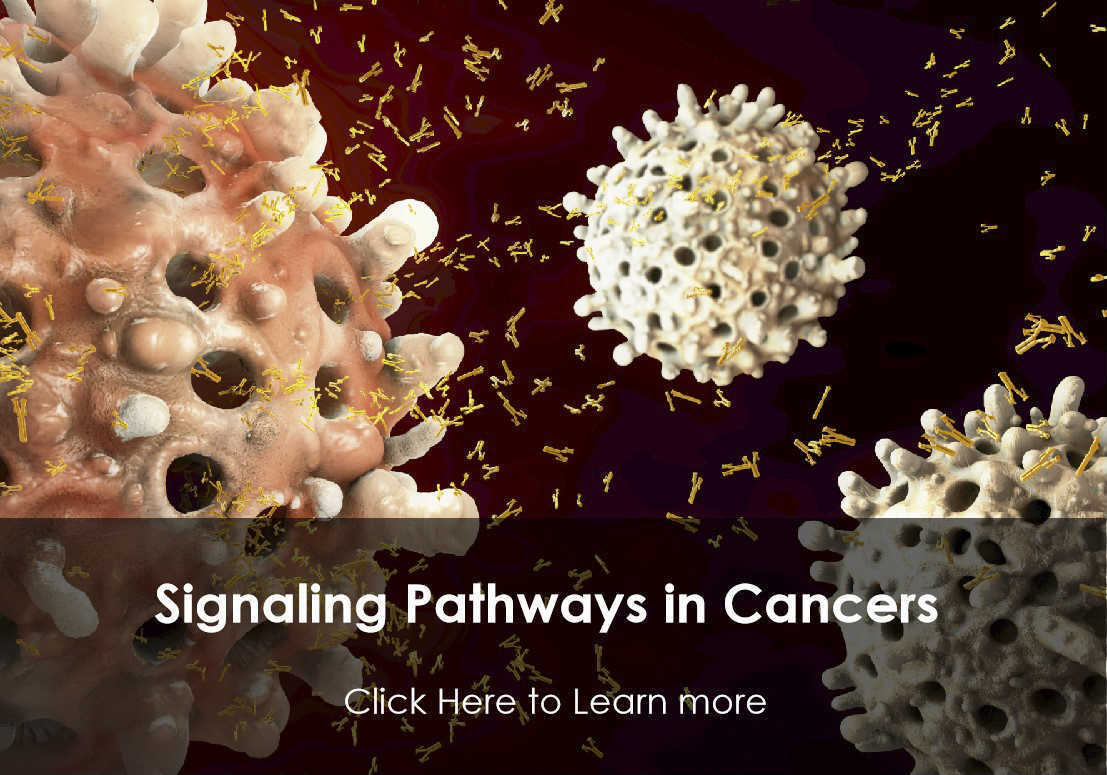COL1A2
This gene encodes the pro-alpha2 chain of type I collagen whose triple helix comprises two alpha1 chains and one alpha2 chain. Type I is a fibril-forming collagen found in most connective tissues and is abundant in bone, cornea, dermis and tendon. Mutations in this gene are associated with osteogenesis imperfecta types I-IV, Ehlers-Danlos syndrome type VIIB, recessive Ehlers-Danlos syndrome Classical type, idiopathic osteoporosis, and atypical Marfan syndrome. Symptoms associated with mutations in this gene, however, tend to be less severe than mutations in the gene for the alpha1 chain of type I collagen (COL1A1) reflecting the different role of alpha2 chains in matrix integrity. Three transcripts, resulting from the use of alternate polyadenylation signals, have been identified for this gene. [provided by R. Dalgleish
Full Name
Collagen Type I Alpha 2 Chain
Function
Type I collagen is a member of group I collagen (fibrillar forming collagen).
Biological Process
Blood coagulation Source: Reactome
Blood vessel development Source: UniProtKB
Bone mineralization Source: Ensembl
Cellular response to amino acid stimulus Source: Ensembl
Collagen fibril organization Source: UniProtKB
Collagen metabolic process Source: Ensembl
Cytokine-mediated signaling pathway Source: Reactome
Extracellular matrix assembly Source: Ensembl
Extracellular matrix organization Source: GO_Central
Leukocyte migration Source: Reactome
Odontogenesis Source: UniProtKB
Platelet activation Source: Reactome
Protein heterotrimerization Source: Ensembl
Regulation of blood pressure Source: UniProtKB
Regulation of immune response Source: Reactome
Rho protein signal transduction Source: UniProtKB
Skeletal system development Source: UniProtKB
Skin morphogenesis Source: UniProtKB
Transforming growth factor beta receptor signaling pathway Source: UniProtKB
Blood vessel development Source: UniProtKB
Bone mineralization Source: Ensembl
Cellular response to amino acid stimulus Source: Ensembl
Collagen fibril organization Source: UniProtKB
Collagen metabolic process Source: Ensembl
Cytokine-mediated signaling pathway Source: Reactome
Extracellular matrix assembly Source: Ensembl
Extracellular matrix organization Source: GO_Central
Leukocyte migration Source: Reactome
Odontogenesis Source: UniProtKB
Platelet activation Source: Reactome
Protein heterotrimerization Source: Ensembl
Regulation of blood pressure Source: UniProtKB
Regulation of immune response Source: Reactome
Rho protein signal transduction Source: UniProtKB
Skeletal system development Source: UniProtKB
Skin morphogenesis Source: UniProtKB
Transforming growth factor beta receptor signaling pathway Source: UniProtKB
Cellular Location
Extracellular matrix
Involvement in disease
Ehlers-Danlos syndrome, arthrochalasia type, 2 (EDSARTH2):
A form of Ehlers-Danlos syndrome, a connective tissue disorder characterized by hyperextensible skin, atrophic cutaneous scars due to tissue fragility and joint hyperlaxity. EDSARTH2 is an autosomal dominant condition characterized by frequent congenital hip dislocation and extreme joint laxity with recurrent joint subluxations and minimal skin involvement.
Osteogenesis imperfecta 1 (OI1):
An autosomal dominant form of osteogenesis imperfecta, a connective tissue disorder characterized by low bone mass, bone fragility and susceptibility to fractures after minimal trauma. Disease severity ranges from very mild forms without fractures to intrauterine fractures and perinatal lethality. Extraskeletal manifestations, which affect a variable number of patients, are dentinogenesis imperfecta, hearing loss, and blue sclerae. OI1 is a non-deforming form with normal height or mild short stature, and no dentinogenesis imperfecta.
Osteogenesis imperfecta 2 (OI2):
An autosomal dominant form of osteogenesis imperfecta, a connective tissue disorder characterized by low bone mass, bone fragility and susceptibility to fractures after minimal trauma. Disease severity ranges from very mild forms without fractures to intrauterine fractures and perinatal lethality. Extraskeletal manifestations, which affect a variable number of patients, are dentinogenesis imperfecta, hearing loss, and blue sclerae. OI2 is characterized by bone fragility, with many perinatal fractures, severe bowing of long bones, undermineralization, and death in the perinatal period due to respiratory insufficiency.
Ehlers-Danlos syndrome, cardiac valvular type (EDSCV):
A form of Ehlers-Danlos syndrome, a group of connective tissue disorders characterized by skin hyperextensibility, articular hypermobility, and tissue fragility. EDSCV is an autosomal recessive disease characterized by mitral valve prolapse and insufficiency, mitral regurgitation, and aortic insufficiency, in addition to joint laxity, skin hyperextensibility and friability, and abnormal scar formation.
Osteogenesis imperfecta 3 (OI3):
An autosomal dominant form of osteogenesis imperfecta, a connective tissue disorder characterized by low bone mass, bone fragility and susceptibility to fractures after minimal trauma. Disease severity ranges from very mild forms without fractures to intrauterine fractures and perinatal lethality. Extraskeletal manifestations, which affect a variable number of patients, are dentinogenesis imperfecta, hearing loss, and blue sclerae. OI3 is characterized by progressively deforming bones, very short stature, a triangular face, severe scoliosis, grayish sclera and dentinogenesis imperfecta.
Osteogenesis imperfecta 4 (OI4):
An autosomal dominant form of osteogenesis imperfecta, a connective tissue disorder characterized by low bone mass, bone fragility and susceptibility to fractures after minimal trauma. Disease severity ranges from very mild forms without fractures to intrauterine fractures and perinatal lethality. Extraskeletal manifestations, which affect a variable number of patients, are dentinogenesis imperfecta, hearing loss, and blue sclerae. OI4 is characterized by moderately short stature, mild to moderate scoliosis, grayish or white sclera and dentinogenesis imperfecta.
A form of Ehlers-Danlos syndrome, a connective tissue disorder characterized by hyperextensible skin, atrophic cutaneous scars due to tissue fragility and joint hyperlaxity. EDSARTH2 is an autosomal dominant condition characterized by frequent congenital hip dislocation and extreme joint laxity with recurrent joint subluxations and minimal skin involvement.
Osteogenesis imperfecta 1 (OI1):
An autosomal dominant form of osteogenesis imperfecta, a connective tissue disorder characterized by low bone mass, bone fragility and susceptibility to fractures after minimal trauma. Disease severity ranges from very mild forms without fractures to intrauterine fractures and perinatal lethality. Extraskeletal manifestations, which affect a variable number of patients, are dentinogenesis imperfecta, hearing loss, and blue sclerae. OI1 is a non-deforming form with normal height or mild short stature, and no dentinogenesis imperfecta.
Osteogenesis imperfecta 2 (OI2):
An autosomal dominant form of osteogenesis imperfecta, a connective tissue disorder characterized by low bone mass, bone fragility and susceptibility to fractures after minimal trauma. Disease severity ranges from very mild forms without fractures to intrauterine fractures and perinatal lethality. Extraskeletal manifestations, which affect a variable number of patients, are dentinogenesis imperfecta, hearing loss, and blue sclerae. OI2 is characterized by bone fragility, with many perinatal fractures, severe bowing of long bones, undermineralization, and death in the perinatal period due to respiratory insufficiency.
Ehlers-Danlos syndrome, cardiac valvular type (EDSCV):
A form of Ehlers-Danlos syndrome, a group of connective tissue disorders characterized by skin hyperextensibility, articular hypermobility, and tissue fragility. EDSCV is an autosomal recessive disease characterized by mitral valve prolapse and insufficiency, mitral regurgitation, and aortic insufficiency, in addition to joint laxity, skin hyperextensibility and friability, and abnormal scar formation.
Osteogenesis imperfecta 3 (OI3):
An autosomal dominant form of osteogenesis imperfecta, a connective tissue disorder characterized by low bone mass, bone fragility and susceptibility to fractures after minimal trauma. Disease severity ranges from very mild forms without fractures to intrauterine fractures and perinatal lethality. Extraskeletal manifestations, which affect a variable number of patients, are dentinogenesis imperfecta, hearing loss, and blue sclerae. OI3 is characterized by progressively deforming bones, very short stature, a triangular face, severe scoliosis, grayish sclera and dentinogenesis imperfecta.
Osteogenesis imperfecta 4 (OI4):
An autosomal dominant form of osteogenesis imperfecta, a connective tissue disorder characterized by low bone mass, bone fragility and susceptibility to fractures after minimal trauma. Disease severity ranges from very mild forms without fractures to intrauterine fractures and perinatal lethality. Extraskeletal manifestations, which affect a variable number of patients, are dentinogenesis imperfecta, hearing loss, and blue sclerae. OI4 is characterized by moderately short stature, mild to moderate scoliosis, grayish or white sclera and dentinogenesis imperfecta.
PTM
Prolines at the third position of the tripeptide repeating unit (G-X-Y) are hydroxylated in some or all of the chains.
View more
Anti-COL1A2 antibodies
+ Filters
 Loading...
Loading...
Target: COL1A2
Host: Mouse
Antibody Isotype: IgG1, λ
Specificity: Human, Mouse, Rat
Clone: CF108
Application*: WB, IP, IF, E, P
Target: COL1A2
Host: Mouse
Antibody Isotype: IgG1, λ
Specificity: Human, Mouse, Rat
Clone: 003-02
Application*: WB, IP, IF, E, P
Target: COL1A2
Host: Mouse
Antibody Isotype: IgG2a
Specificity: Human
Clone: 3C3
Application*: E, IH
Target: COL1A2
Host: Mouse
Antibody Isotype: IgG1
Specificity: Human
Clone: CBT4142
Application*: IC, F
Target: COL1A2
Host: Mouse
Antibody Isotype: IgG1, κ
Specificity: Human, Mouse, Rat, Dog, Cattle, Pig
Clone: CBCNC-253
Application*: WB, IP, IF, E
Target: COL1A2
Host: Mouse
Antibody Isotype: IgM, κ
Specificity: Human
Clone: C8656
Application*: WB, IP, IF, E
More Infomation
Hot products 
-
Mouse Anti-ANXA7 Recombinant Antibody (A-1) (CBMAB-A2941-YC)

-
Mouse Anti-ACTB Recombinant Antibody (V2-179553) (CBMAB-A0870-YC)

-
Rabbit Anti-Acetyl-Histone H3 (Lys36) Recombinant Antibody (V2-623395) (CBMAB-CP0994-LY)

-
Mouse Anti-BAX Recombinant Antibody (CBYY-0216) (CBMAB-0217-YY)

-
Armenian hamster Anti-CD40 Recombinant Antibody (HM40-3) (CBMAB-C10365-LY)

-
Mouse Anti-C1QC Recombinant Antibody (CBFYC-0600) (CBMAB-C0654-FY)

-
Rabbit Anti-CCN1 Recombinant Antibody (CBWJC-3580) (CBMAB-C4816WJ)

-
Mouse Anti-14-3-3 Pan Recombinant Antibody (V2-9272) (CBMAB-1181-LY)

-
Mouse Anti-BRCA2 Recombinant Antibody (CBYY-1728) (CBMAB-2077-YY)

-
Mouse Anti-CIITA Recombinant Antibody (CBLC160-LY) (CBMAB-C10987-LY)

-
Rabbit Anti-AKT3 Recombinant Antibody (V2-12567) (CBMAB-1057-CN)

-
Mouse Anti-AKR1C3 Recombinant Antibody (V2-12560) (CBMAB-1050-CN)

-
Mouse Anti-CCND2 Recombinant Antibody (DCS-3) (CBMAB-G1318-LY)

-
Rabbit Anti-ALK (Phosphorylated Y1278) Recombinant Antibody (D59G10) (PTM-CBMAB-0035YC)

-
Mouse Anti-CCL18 Recombinant Antibody (64507) (CBMAB-C7910-LY)

-
Mouse Anti-APOH Recombinant Antibody (4D9A4) (CBMAB-A3249-YC)

-
Mouse Anti-CD247 Recombinant Antibody (6B10.2) (CBMAB-C1583-YY)

-
Mouse Anti-ALB Recombinant Antibody (V2-180650) (CBMAB-A2186-YC)

-
Mouse Anti-8-oxoguanine Recombinant Antibody (V2-7719) (CBMAB-1898CQ)

-
Mouse Anti-ADGRE2 Recombinant Antibody (V2-261270) (CBMAB-C0813-LY)

For Research Use Only. Not For Clinical Use.
(P): Predicted
* Abbreviations
- AActivation
- AGAgonist
- APApoptosis
- BBlocking
- BABioassay
- BIBioimaging
- CImmunohistochemistry-Frozen Sections
- CIChromatin Immunoprecipitation
- CTCytotoxicity
- CSCostimulation
- DDepletion
- DBDot Blot
- EELISA
- ECELISA(Cap)
- EDELISA(Det)
- ESELISpot
- EMElectron Microscopy
- FFlow Cytometry
- FNFunction Assay
- GSGel Supershift
- IInhibition
- IAEnzyme Immunoassay
- ICImmunocytochemistry
- IDImmunodiffusion
- IEImmunoelectrophoresis
- IFImmunofluorescence
- IGImmunochromatography
- IHImmunohistochemistry
- IMImmunomicroscopy
- IOImmunoassay
- IPImmunoprecipitation
- ISIntracellular Staining for Flow Cytometry
- LALuminex Assay
- LFLateral Flow Immunoassay
- MMicroarray
- MCMass Cytometry/CyTOF
- MDMeDIP
- MSElectrophoretic Mobility Shift Assay
- NNeutralization
- PImmunohistologyp-Paraffin Sections
- PAPeptide Array
- PEPeptide ELISA
- PLProximity Ligation Assay
- RRadioimmunoassay
- SStimulation
- SESandwich ELISA
- SHIn situ hybridization
- TCTissue Culture
- WBWestern Blot

Online Inquiry







